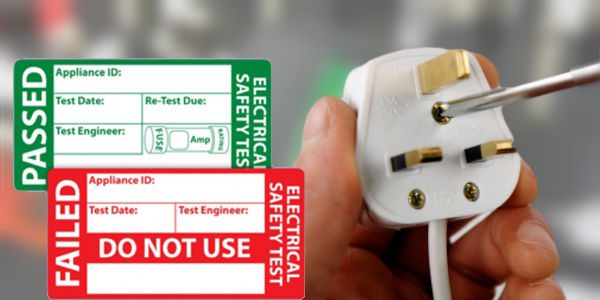Course overview
This comprehensive PAT Testing course is designed to provide delegates with the skills to carry out the testing of all types of electrical equipment. The course covers the legal requirements and relevant standards, the types of tests and test equipment, the results and the recording of results.
Our training events are interactive, combining theory and practise. You’ll have hands-on experience with industry-standard PAT Testers. In addition, we have up-to-date information on all PAT Testers so you can make informed decisions.
Learners will learn how to test and inspect a range of electrical appliances and understand the safety checks that need to be carried out. The course also covers the requirements for maintaining and storing test results as well as the use of mains powered PAT Testing equipment. We will cover the testing of all plug-in portable appliances, including IT equipment, industrial equipment (including 3-phase), power tools (230V and 110V), and both domestic and commercial appliances. If it needs to be tested, we’ll show you how.
At the end of the day, delegates will be able to undertake their own PAT Testing safely and correctly, in line with current legislation.
Entry Requirements
This course is designed for a wide range of people, regardless of electrical experience, and includes:
- Electricians or tradesmen
- Companies who are wanting to save money hiring a contractor to undertake the PAT testing.
- Landlords wanting to test their own property applies
- Anyone who wants to improve and broaden their knowledge of electrical equipment testing.
What Are The Legal Responsiblities For PAT Testing
The Electricity at Work Regulations 1989 stipulate that all electrical equipment used in the workplace must be tested using Portable Appliance Testing (PAT) before use. This is to ensure that the equipment is safe and compliant with the regulations, and to reduce the risk of electric shock to users.
A PAT testing course provides the knowledge and skills necessary to carry out PAT testing safely and effectively. The course covers topics such as the legal requirements for PAT testing, the types of tests used, and the interpretation of test results. Additionally, it teaches the practical skills required for carrying out PAT tests, including how to use the appropriate testing equipment.
By completing a PAT course, individuals can ensure that they are qualified to safely undertake PAT testing, helping to keep workplaces and homes safe.
Course Accreditation
Learners who successfully undertake this course will receive a Skills Training Group training certificate.
Overview of PAT Certification
When the course is completed, a quality-assured PAT test certificate will be given to you. It can be utilised as proof of compliance and audit.
After the course completion, you will understand the following:
- What types of electrical equipment fall into the two categories of portable equipment?
- What portable electrical equipment-using workplaces must comply with under the law?
- How to use the hierarchy of controls when performing a risk assessment of portable electrical equipment.
- What dangers specific working conditions and portable electrical equipment may present?
- How to safely choose and utilise portable electrical equipment, including how to plug things in.
- How to carry out visual inspections, portable appliance tests, and combined visual inspections and tests before usage.
- What to do if equipment malfunctions or fails a test or inspection.
- How to choose the right test and PAT testing frequency.
- What safety measures ought to be in place?
The suggested renewal test date will be printed on your PAT test certificate.
It serves as a record of previous actions. Records can be kept in various formats, from a simple list to a complex PDF.
As a general rule, each Portable Appliance Testing (PAT) Certificate must include the following information as a minimum requirement:
- Information about the location where the PAT test was conducted
- A list of all the portable electrical appliances tested, along with their test results
- When the PAT test was conducted
- Information about the business or individual that the test carried out
NOTE: According to the following work regulations, employers must ensure that electrical equipment is secure: Health and Safety at Work etc. Act 1974, Management of Health and Safety at Work Regulations 1999 (MHSWR), Electricity at Work Regulations 1989, Provision and Use of Work Equipment Regulations 1998 (PUWER)
Modules breakdown
- The Code of Practice for the In-Service Inspection and Testing of Electrical Equipment’s applications, objectives, and definitions
- The statutory and non-statutory requirements for electrical equipment maintenance
- Electrical units, circuits, and components associated with electrical equipment in-service inspection and testing
- The construction and classification of equipment, as well as how these relate to electric shock protection
- The procedures for electrical equipment in-service inspection and testing
- How to Perform Electrical Equipment Inspection and Testing
- Information and documentation pertaining to electrical equipment in-service inspection and testing
- Electrical equipment must be inspected and tested.
